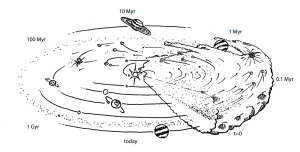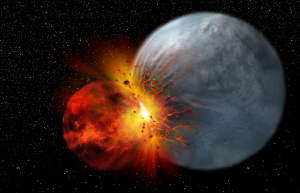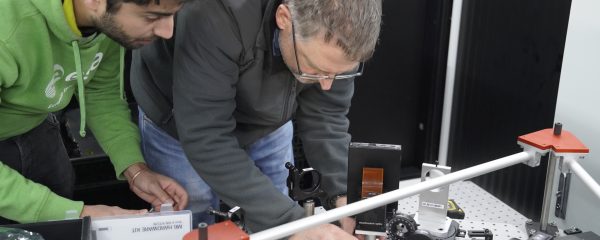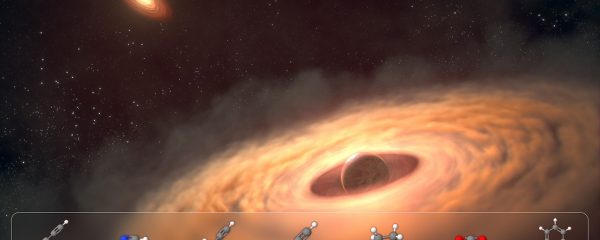Numerical Laboratories
Project Leader: Prof. Ben Moore
The aim of this project is to study in detail some of the key processes involved during the formation and evolution of planetary systems, from the collapse of the proto-stellar cloud through to the formation of rocky earth-like planets. Insights into the various phases of this complex evolution can be obtained through supercomputer calculations using several state-of-the-art numerical codes developed in Zurich that follow the hydro-dynamical and collisional processes that drive planet formation. Amongst the key goals are: to test and compare models of planet formation with observational data, to make predictions for the statistical properties of planet populations, to explore the long term evolution and stability of planetary systems, to study the accretion history of terrestrial planets and the radial elemental abundances, and to explore the frequency of habitable planetary systems in different environments of our Galaxy.
Our project is split into two parts that will allow us to simulate planet formation across the distinct epochs that occur over the ~100 million year timescale that planet formation takes place:
- The first part led by Prof. Lucio Mayer, explores the early formation phase including the mass inflow rates into the forming star and surrounding proto-planetary disk. This project will also target the subsequent evolution of the gaseous disk and the formation of gas-giant planets.
- The second part led by Dr. Joachim Stadel, aims to develop the numerical tools and techniques to study the formation and long term evolution of rocky Earth-like planets. These tools will then be applied to make statistical libraries of numerical solar systems for comparison with data and to make predictions for new observational strategies.
Ultimately, these techniques allow us to also investigate fascinating science questions, such as the stability of planetary systems, to study the accretion histories of planets and to quantify the radial mixing of elements. Our long term goal would be to merge these techniques together so that we can carry out fully self-consistent simulations of the combined gaseous and rocky components.
Sub-projects
Hydrodynamical simulations of protoplanetary disks and planet formation
Prof. Lucio Mayer
Understanding the formation of planets requires first to understand the origin and development of their natal places, namely protoplanetary disks around young stars. From observational evidence disks are known to evolve through various phases in which several complex processes take place, regulating mass transport, thermodynamics and the gathering of gaseous and solid matter into planets. Read more >>
From planetesimals to planets
Dr. Joachim Stadel
This part of our project focuses in detail on the late stages of planet formation using direct N-body simulations which follow all the gravitational interactions between planetesimals over hundreds of millions of orbits, including an accurate treatment of close approaches of multiple bodies as well as their collisions.
Read more >>






